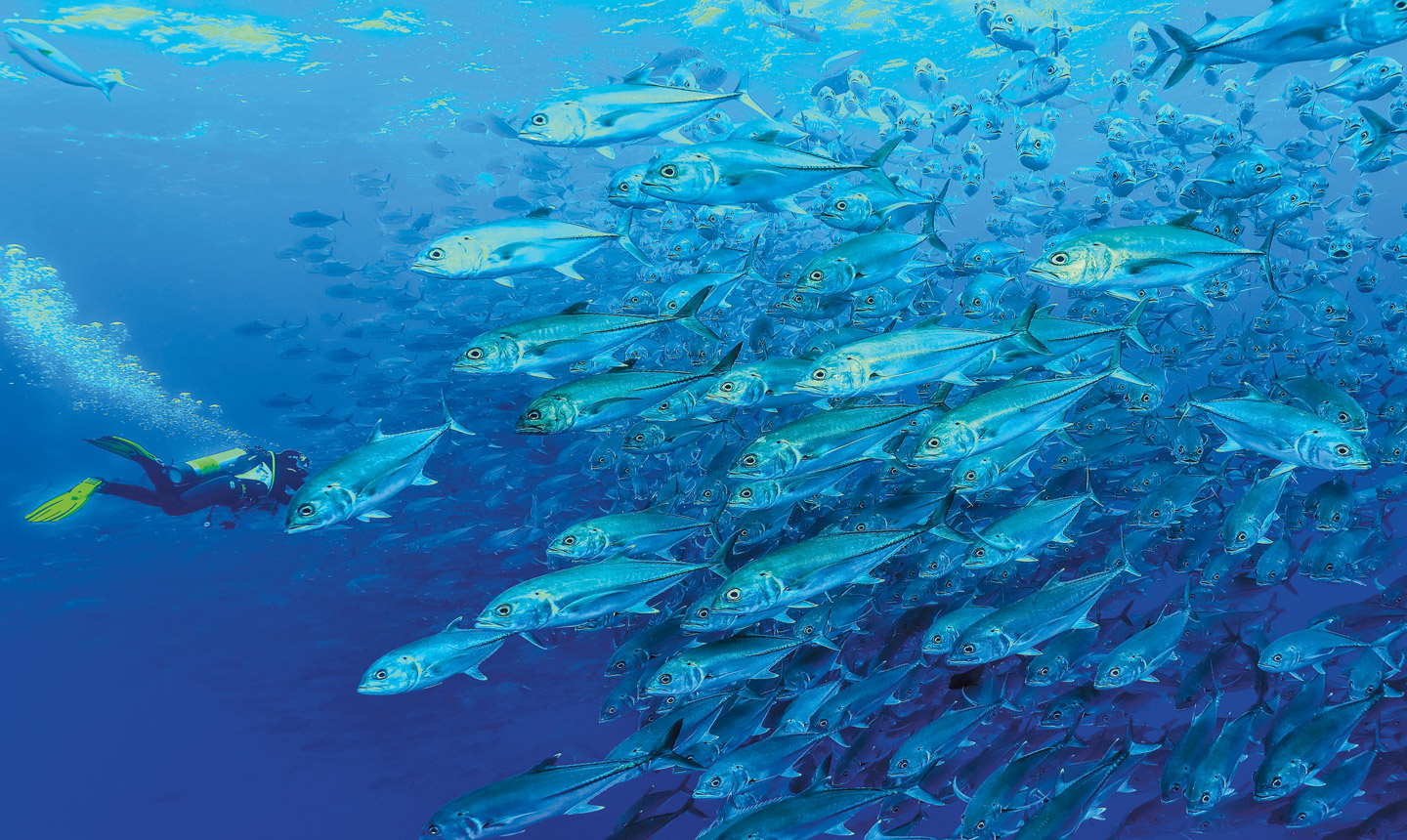In the middle of the North Atlantic Ocean lies an area known as the Sargasso Sea. Thick clumps of seaweed float on its surface, providing shelter for baby sea turtles. This stretch of water also functions as a breeding ground for endangered eels, a feeding stop for migrating whales, and a home for hundreds of other species—some found nowhere else on the planet. Its ecosystem is so complex that the Sargasso Sea (see map below), is often called a “floating rainforest.”
It’s a critical habitat that scientists say is in need of protection. Its marine life is threatened by overfishing and plastic debris. And because the Sargasso is so far from any country’s shores, no single nation has the legal authority to fully protect the area.
More than half of the world’s ocean waters are in the same boat: They’re too far from land to fall under the governance of any one country. Under international law, countries control only the waters within about 230 miles of their shores. The waters beyond that—known collectively as the high seas—belong to everyone.
The high seas cover about 80 million square miles and contain some of the most important and threatened ecosystems in the world. Only about 1 percent of those waters are protected—and very few rules exist about what can and can’t be done there.
However, a new United Nations (U.N.) treaty could change that. Conservationists hope the pact will allow for the creation of new protected areas on the high seas and require those who want to engage in commercial activities there, such as fishing or drilling, to assess any possible environmental impact.
Those measures would be a step toward helping the oceans recover from damage that has already been done. Habitat destruction, overfishing, pollution, and climate change are “pushing the ocean system to the point of collapse,” according to a 2014 report by the Global Ocean Commission.

